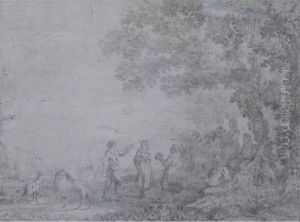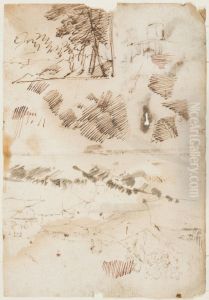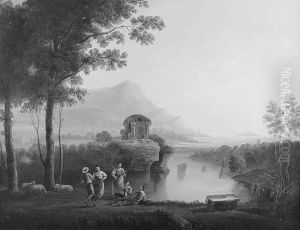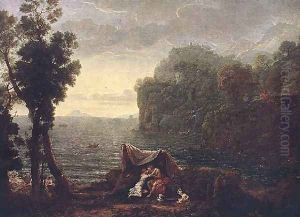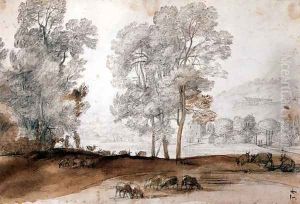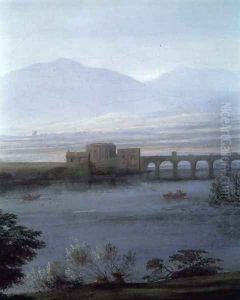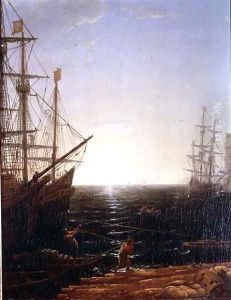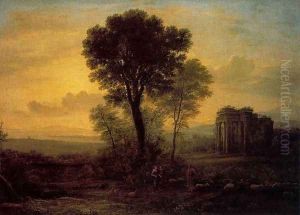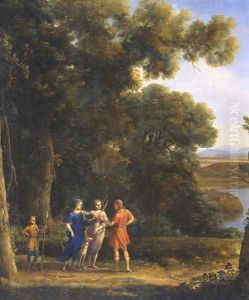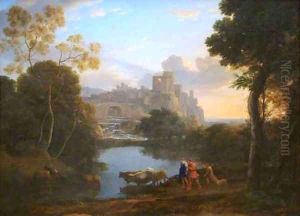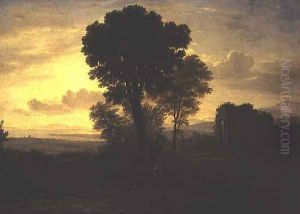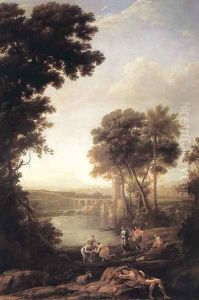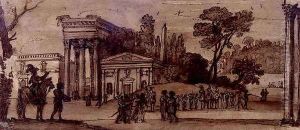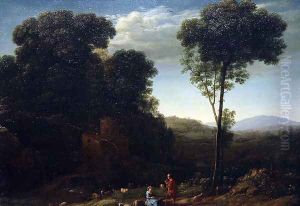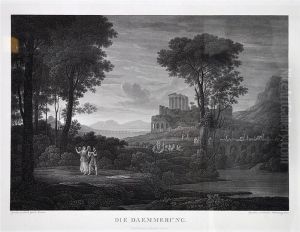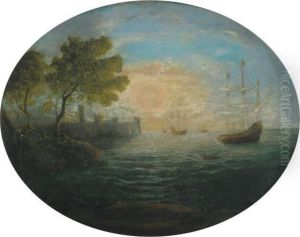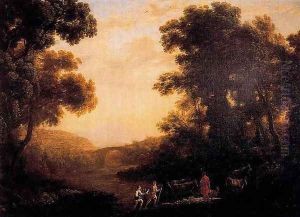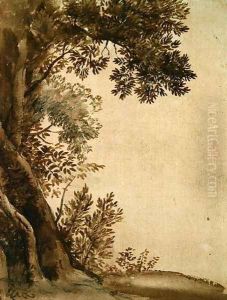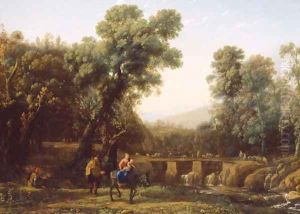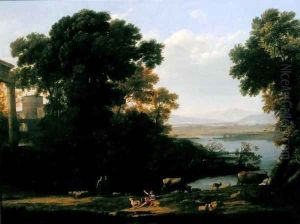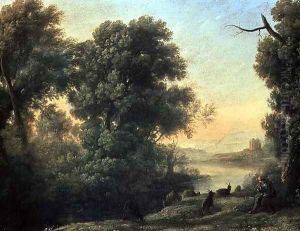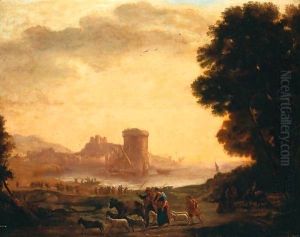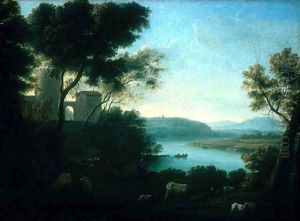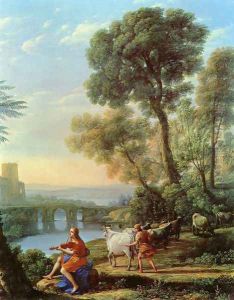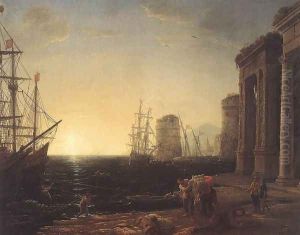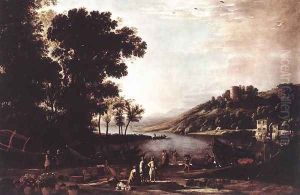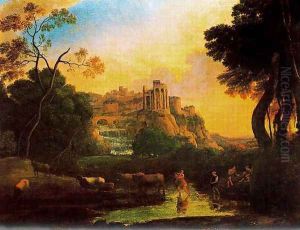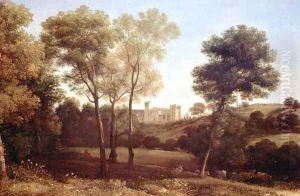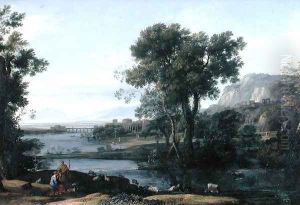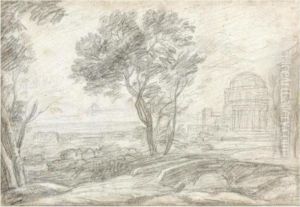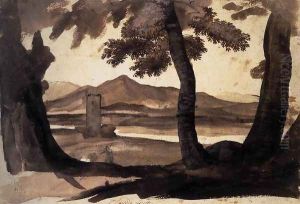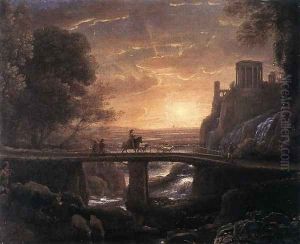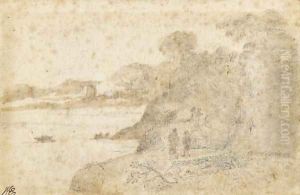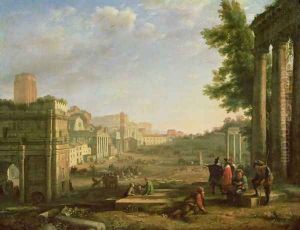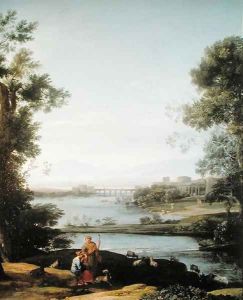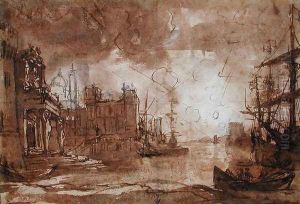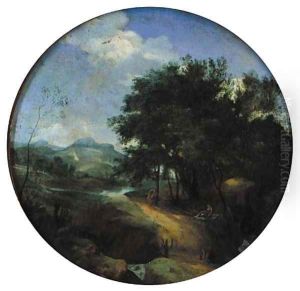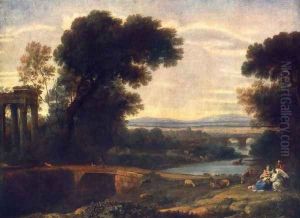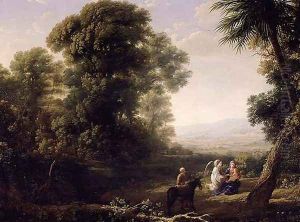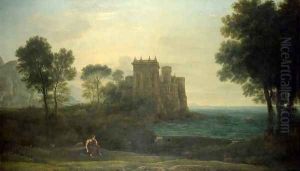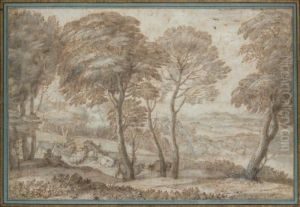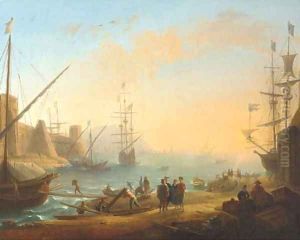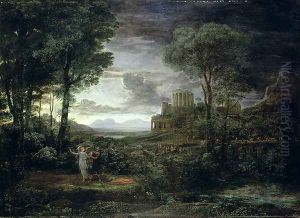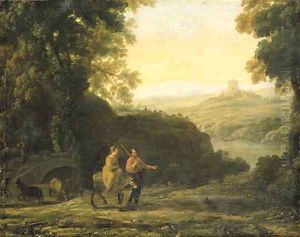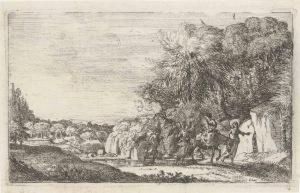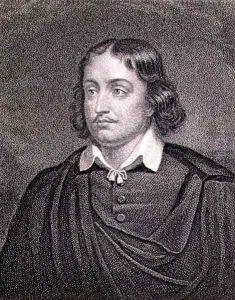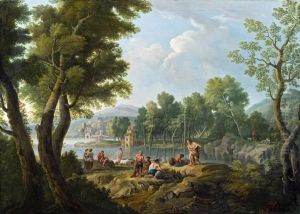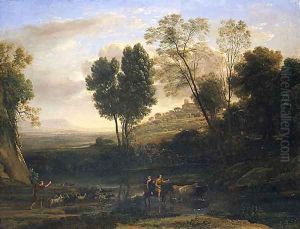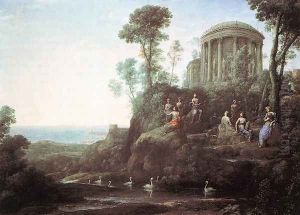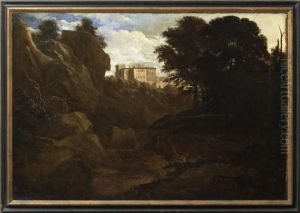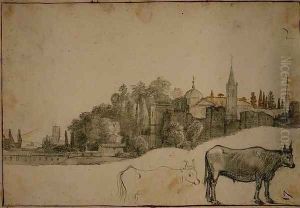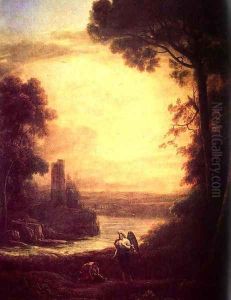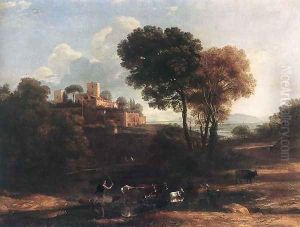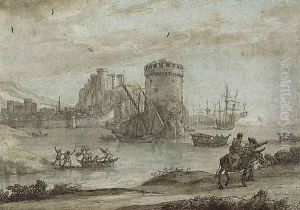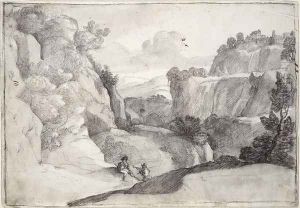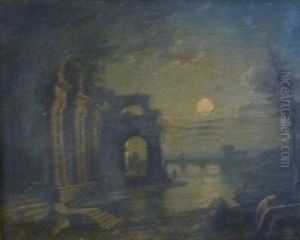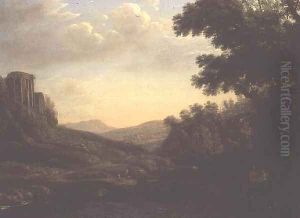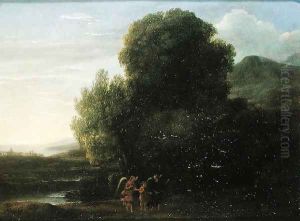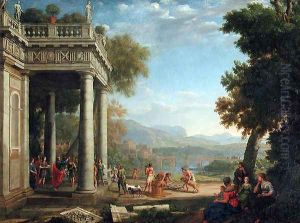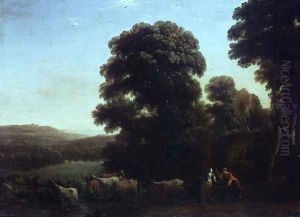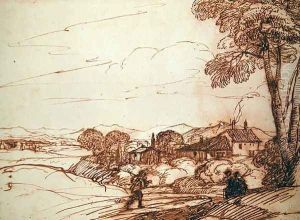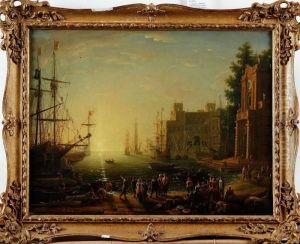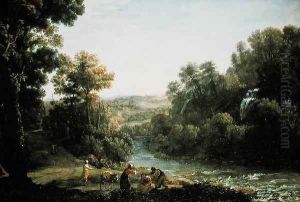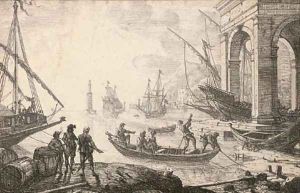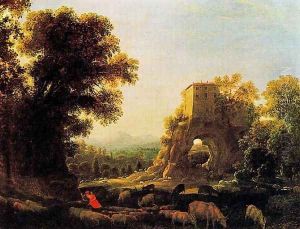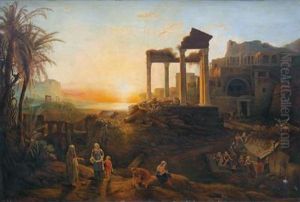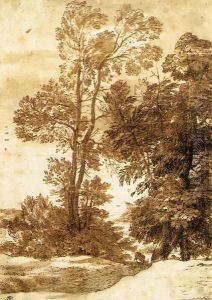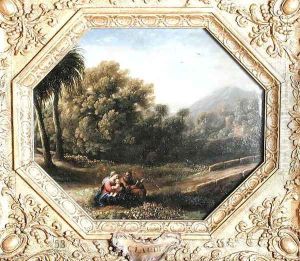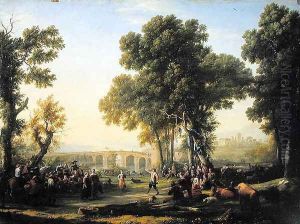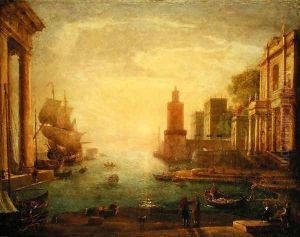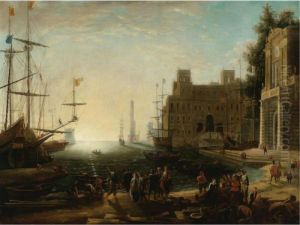Claude Lorrain (Claude Gellee) Paintings
Claude Lorrain, born Claude Gellée and often known simply as Claude in English, was a French painter, draughtsman and engraver who was active during the Baroque era. He was born in 1600 in the Duchy of Lorraine (which is now part of modern-day France) and moved to Rome around 1613 where he spent most of his life. His work is characterized by its pioneering approach to landscape painting, where he depicted idealized and pastoral landscapes, often incorporating classical architecture and narratives from antiquity.
Claude did not immediately start off as an artist; his early years in Rome were spent working in various capacities, including as an assistant to the landscape painter Agostino Tassi. It was during this period that he began to develop his own style, focusing on the effects of light and atmosphere in landscape. By the mid-17th century, Claude had become one of the most famous artists in Europe, with a particularly strong patronage from the aristocracy and collectors who sought his idyllic representations of the natural world.
His landscapes were not just mere representations of nature; they were imbued with poetic qualities that aimed to evoke emotion and contemplation from the viewer. He meticulously planned his compositions, using the placement of trees, water, and the light of the sun or moon to create harmonious scenes that were often described as 'the image of paradise'. Indeed, his influence was so profound that he played a key role in the development of the classical landscape genre and his work prefigured the 18th-century artistic movement known as the Rococo.
Claude's legacy is also tied to his 'Liber Veritatis' or 'Book of Truth', a collection of drawings that recorded his finished paintings. This served as a catalogue of his works to aid collectors and to prevent forgeries, a testament to his fame and the value placed on his art during his lifetime. The 'Liber Veritatis' is now held in the British Museum in London.
Claude Lorrain passed away in Rome on 23 November 1682. His influence on the history of art is profound; he is recognized as a master who brought a new level of poetic beauty to landscape painting, influencing generations of artists, including the likes of J.M.W. Turner and John Constable, who looked to his works as a benchmark for their own explorations into light and atmosphere in landscapes.
